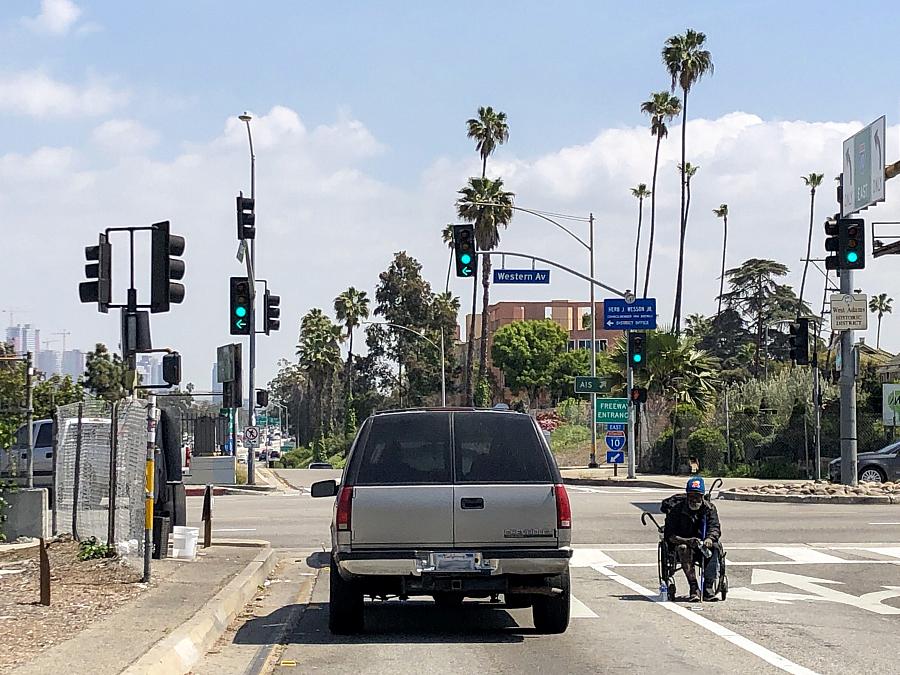People are dying on the street in L.A. every day, despite staggering moral and financial costs

The reality of California’s homelessness crisis is that it has a growing body count. Last year in Los Angeles County, the epicenter of the crisis, 921 people died while experiencing homelessness, according to the coroner’s office. In Orange County in 2018, it was 210; San Francisco, 135; and Sacramento, 132.
In 2019, Los Angeles is on track to see more than 1,000 people die on the streets. The median age of death is about 52.
The reasons people die outside are shocking, but not necessarily surprising. Uncontrolled substance abuse, physical trauma and its complications, and the gruelingly high rate of both homicide and suicide are some of the top causes. But the most common cause of death listed in county coroner records is typically either a preventable illness or a treatable disease.
Combined, treatable illnesses like sepsis, the flu, and pneumonia, and treatable disease like diabetes, asthma, and heart disease kill more than anything else. While each individual case is different, the majority of people who inevitably expire while living in the public right-of-way died from a medical condition that western medicine knows how to treat.
For people living without a roof over their head in California, it’s not that they don’t want an annual check-up; it’s that the barriers to getting quality preventative care when your house is a tent in a storm drain are simply too numerous.
So, people get sicker. Life on the street is an intensely corrosive experience for a person’s physical and mental health. Now compound the fact that access to medical care is virtually nonexistent, and severe illness arrives rapidly.
According to Los Angeles County coroner’s office data, roughly 30% of the people included died in a hospital. In some cases, it was as a result of trauma from the street, like a car crash or physical assault. But for others — for many — it the last of many trips through the emergency medical system: brought in by ambulance, a week as an in-patient, discharged, and once again brought in by ambulance. The so-called “frequent flyers” rack up enormous public bills through their endless cycling in and out of the county’s medical institutions.
Unless they are lucky enough to get placed into housing, the cold reality is that frequent flyer will continue cycling through the emergency medical system until they die. Hundreds of lives end inside hospital emergency rooms and ICUs. Some even die on the street just outside a hospital after an extended period spent inside.
Despite the horrifying human cost — the reality that thousands are slowly slipping away on sidewalks and under overpasses right at this very minute — the cycle is as cost effective as throwing bundles of cash into a garbage incinerator. A typical health outcome for a frequent flyer is a hospital death at age 55 after being brought in by ambulance for the fifth time in the final year.
Homelessness is a bigger social problem than just the health care system alone can deal with. Without stable housing, it’s virtually impossible for someone who’s experiencing homelessness to get better. But the reality is that the number of frequent flyers (and correlating amount of mortality) is increasing and needs to be communicated to the wider public with urgency.
Homelessness gets called a “public health crisis” over and over again. But framing it as such eclipses the individual health needs of the people who are dying on the street. Any response short of treating the health of those deteriorating outside will not be successful.
There goals of this story for the 2019 Data Fellowship are twofold. The first is to underscore how many times the social safety net failed to catch people who show up in mortality data from the Los Angeles County coroner’s office.
The second goal is to underscore for the general public that they are paying mightily for homelessness, regardless of whether or not they support more funding for homeless services and housing.
It’s a known fact that we can house people for less than we inevitably spend on jailing and hospitalization, yet we continue to not do that. The reasons for doing so are political, and partially because of a perceived burdensome public cost. While it’s true that building housing for the homeless is inordinately expensive, a small body of research indicates that it’s still likely less than paying for the servicing, hospitalization and jailing of those people while they’re alive.

